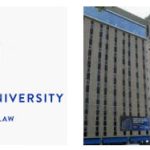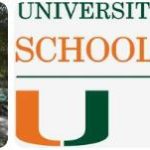The University of Missouri School of Law has a long and illustrious history. Founded in 1872, it is the oldest law school west of the Mississippi River. The University of Missouri School of Law was founded by the Missouri General Assembly to provide legal education to the state’s citizens. The first classes were held in a downtown Columbia building owned by Judge Jesse W. Regan, with three professors and five students enrolled. Over the years, the school has grown significantly, both in size and reputation. In 1891, it became affiliated with the University of Missouri System as its only professional school.
Since then, the University of Missouri School of Law has continued to evolve as one of America’s leading law schools. It offers a comprehensive curriculum that includes courses on public law, private law, criminal law, international law and legal research and writing. The school also houses several research centers including the Center for Legal Studies in Business and Technology, as well as centers devoted to civil rights litigation and criminal justice reform. In addition to offering degree programs at both undergraduate and graduate levels, it also hosts numerous conferences throughout the year on topics such as intellectual property rights and employment law. Furthermore, its faculty are some of the most renowned scholars in their respective fields – many have served as judges or members of government bodies such as Congress or Supreme Court justices.
University of Missouri School of Law is located in the state of Missouri. As one of the leading law programs, University of Missouri School of Law has a high average LSAT score of 156-161 when recruiting new students. As a return, the median starting salary for law graduates reaches $60,000 per year. See the following table for detailed admissions information and career profiles of University of Missouri School of Law.
Admissions: University of Missouri
The University of Missouri School of Law is one of the most competitive law schools in the nation. The admissions statistics for the 2019-2020 school year show that out of nearly 2,800 applicants, only 568 were accepted. This acceptance rate is approximately 20%, indicating that admission to the University of Missouri School of Law is highly selective. The median LSAT score for accepted applicants was 159 and the median GPA was 3.48. Additionally, over half of all accepted students had a GPA above 3.6 and an LSAT score above 160, demonstrating that those with higher academic credentials tend to have a much better chance of being admitted to this prestigious school.
| Fall 2019 Admissions and Enrollment Statistics | |
|---|---|
| Total number of full- and part-time applicants | 914 |
| Total number of full- and part-time acceptances | 400 |
| Overall acceptance rate | 43.8% |
| Total number of full- and part-time first-year students enrolled | 147 |
| Number of full-time program applicants | 914 |
| Number of full-time program acceptances | 400 |
| Full-time acceptance rate | 43.8% |
| Number of first-year full-time students enrolled | 147 |
| Number of part-time program applicants | N/A |
| Number of part-time program acceptances | N/A |
| Part-time acceptance rate | N/A |
| Number of first-year part-time students enrolled | N/A |
| Fall 2019 GPA and LSAT Scores | |
| 25th-75th percentile GPA scores for all students | 3.24-3.7 |
| 25th-75th percentile LSAT scores for all students | 156-161 |
| 25th-75th percentile undergraduate GPA for full-time students | 3.24-3.7 |
| 25th-75th percentile LSAT scores for full-time students | 156-161 |
| 25th-75th percentile undergraduate GPA for part-time students | N/A |
| 25th-75th percentile LSAT scores for part-time students | N/A |
Careers: University of Missouri
| Bar Statistics (Winter and Summer 2018 administrations) | |
|---|---|
| State where the greatest number of first-time test takers took the bar | MO |
| School’s bar passage rate for first-time test takers | 91.9% |
| Statewide bar passage rate for first-time test takers | 91.3% |
| Class of 2018 Graduates | |
| Total graduates | 149 |
| Graduates employed at graduation | 50.7% |
| Graduates known to be employed nine months after graduation | 89.6% |
| Starting Salaries of 2018 Graduates Employed Full-time | |
| 25th percentile private sector starting salary | $52,500 |
| Median private sector starting salary | $60,000 |
| 75th percentile private sector starting salary | $92,000 |
| Percent in the private sector who reported salary information | 42% |
| Median public service starting salary | $44,000 |
| Areas of Legal Practice (Class of 2018) | |
| Percent employed in academia | 1.6% |
| Percent employed in business and industry | 11.3% |
| Percent employed in government | 13.8% |
| Percent employed in all judicial clerkships | 13.0% |
| Percent employed in law firms | 53.7% |
| Percent employed in public interest | 5.0% |
| Percent employed in an unknown field | 1.6% |
| Percent employed in a judicial clerkship by an Article III federal judge | 1.3% |
| 2018 Graduates Employment Location | |
| Graduates employed in-state | 80% |
| Graduates employed in foreign countries | 1% |
| Number of states where graduates are employed | 13 |
| New England (CT, ME, MA, NH, RI, VT) | 0.8% |
| Middle Atlantic (NY, NJ, PA) | 3.3% |
| East North Central (IL, IN, MI, OH, WI) | 4.9% |
| West North Central (IA, KS, MN, MO, NE, ND, SD) | 82.9% |
| South Atlantic (DE, DC, FL, GA, MD, NC, SC, VA, WV) | 0.8% |
| East South Central (AL, KY, MS, TN) | 0.0% |
| West South Central (AR, LA, OK, TX) | 2.4% |
| Pacific (AK, CA, HI, OR, WA) | 3.3% |
| Mountain (AZ, CO, ID, MT, NV, NM, UT, WY) | 0.8% |
| Employment location unknown | 0.0% |
| Career Services | |
| (Data appear as originally submitted by this school) | |
| Career services operations | Through individual coaching and extensive programming, the Professional Development Office teaches law students how to use interpersonal and lawyering skills to define and obtain career goals. The office has an ongoing legal employer outreach in-state and nationally. |
| Job Type | |
| Bar admission required or anticipated (e.g., attorney and corporate counsel positions, law clerks, judicial clerks) | 88.0% |
| J.D. preferred, law degree enhances position (e.g., corporate contracts administrator, alternative dispute resolution specialist, government regulatory analyst, FBI special agent) | 3.0% |
| Professional/other (jobs that require professional skills or training but for which a J.D. is neither preferred nor particularly applicable; e.g., accountant, teacher, business manager, nurse) | 6.0% |
| Nonprofessional/other (job that does not require any professional skills or training or is taken on a temporary basis and not viewed as part of a career path) | 1.0% |









